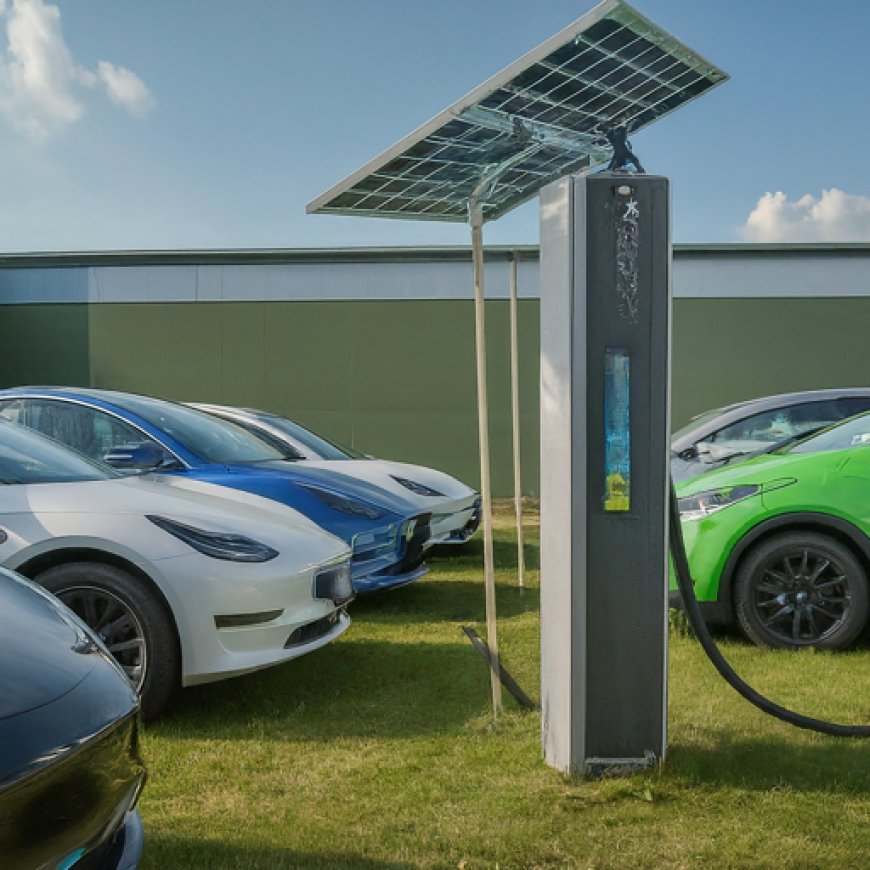Vehicle-to-Grid (V2G): What You Need to Know
Vehicle-to-Grid (V2G) lets EVs send excess power back to the grid, boosting energy efficiency and savings.

As the world moves toward cleaner energy solutions, Vehicle-to-Grid (V2G) technology is emerging as an innovative way to integrate electric vehicles (EVs) with the power grid. If you've heard this term and want to know what it’s all about, you're in the right place. Let’s break down the concept of V2G in a simple, user-friendly way.
What is Vehicle-to-Grid (V2G)?
Vehicle-to-Grid (V2G) is a system that allows electric vehicles (EVs) to send excess energy from their batteries back to the electricity grid. Think of it as a two-way street: your EV not only takes power from the grid to charge but can also give power back when needed.
This can help balance the supply and demand for electricity, especially during peak times when energy consumption is high, or when there are shortages. In short, V2G turns your EV into a mini power plant that can help keep the grid stable.
How Does V2G Work?
-
Charging the EV: Like any electric vehicle, your car is charged using energy from the grid, usually at home or a public charging station.
-
Sending Energy Back to the Grid: If your EV battery has extra power that you don’t need at the moment, it can be sent back to the grid. This is especially useful when demand for electricity spikes—your EV can act as a backup source of energy.
-
Smart Communication: V2G technology uses smart software to communicate between the EV and the grid. The system decides when to send electricity back to the grid or store it in the car’s battery, ensuring that the car still has enough charge for your next drive.
Benefits of V2G
There are several key advantages to V2G technology, both for you as an EV owner and for society:
-
Save Money: Some power companies offer rewards or incentives to EV owners who participate in V2G programs. By sending energy back to the grid during high-demand periods, you could earn credits or reduce your electricity bill.
-
Grid Stability: Power grids sometimes struggle to balance supply and demand, especially with renewable energy sources like solar and wind that aren’t always available. V2G helps stabilize the grid by providing extra energy when it’s needed most.
-
Environmental Benefits: V2G encourages the use of renewable energy and reduces the need for power plants to burn fossil fuels during peak times. By contributing to cleaner energy solutions, you help reduce carbon emissions.
-
Emergency Backup Power: If there’s a power outage, some V2G systems can provide backup power for your home, using the stored energy in your EV.
Challenges of V2G
While the idea of V2G is exciting, it’s still in the early stages, and there are a few challenges to consider:
-
Battery Wear: Frequent charging and discharging could reduce the lifespan of your EV’s battery. However, improvements in battery technology are making this less of a concern over time.
-
Availability of Charging Infrastructure: Not all charging stations are equipped for V2G. Special V2G-enabled chargers are required, and these are not yet widely available in all areas.
-
Grid Compatibility: V2G technology needs to be compatible with your local energy grid. Some grids may need upgrades to handle two-way energy flows from EVs.
-
Regulations and Policies: V2G is a new concept, and governments are still working on regulations to support it. Policies around energy pricing, safety, and incentives may vary depending on where you live.
How Can You Participate in V2G?
If you’re interested in participating in V2G, here’s what you need to do:
-
Own a V2G-Compatible EV: Not all electric vehicles support V2G technology yet, so you’ll need to check if your vehicle is compatible. Some automakers are beginning to introduce V2G-ready models.
-
Get a V2G Charger: A standard EV charger won’t work for V2G. You’ll need to install a special V2G-compatible charging station at home or find one at public charging locations.
-
Join a V2G Program: Many utility companies or energy providers offer V2G programs that compensate you for providing energy back to the grid. Check with your local energy provider to see if they offer such a program.
The Future of V2G
The future looks promising for V2G technology as more electric vehicles hit the road and renewable energy sources like wind and solar power grow. In the next few years, we’re likely to see more V2G-compatible vehicles and wider availability of V2G charging infrastructure.
In the long term, V2G could be a game-changer in how we manage energy, helping to create more sustainable and resilient power grids around the world.
Conclusion
Vehicle-to-Grid (V2G) technology allows electric vehicles to do more than just transport you—they can also store and supply energy. By participating in V2G, you can help reduce your energy bills, support grid stability, and contribute to a cleaner environment. As the technology matures and becomes more widely available, it’s likely to become a key player in the future of clean energy.
So, if you’re thinking about buying an electric vehicle, keep an eye on V2G—it might just change the way we use energy in the years to come!












